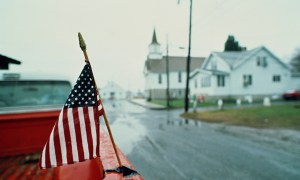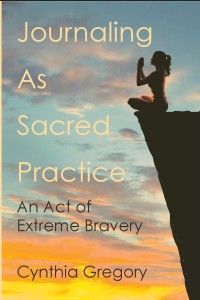Because the best writing requires fierce courage.
Monthly Archives: January 2016
everything’s new again
Tom Dury’s debut novel, The End of Vandalism, is a quiet book about ordinary people living in rural Minnesota. Not much happens in Grouse County, and that’s kind of reassuring in a time of climate change, uncertainty, and uncivil presidential elections.
Originally published in 1994, The End of Vandalism was compared to the works of William Faulkner and Sherwood Anderson. At the heart of this fine novel is love, a love triangle actually, between Grouse County sheriff Dan Norman, his sweet and somewhat remote wife Louise, and her former husband, Tiny Darling. Beautifully written and artfully crafted, Dury’s novel lures the reader in for a glimpse the human condition up close.
Dan Norman is a good man, an upright citizen. He manages the criminal element of Grouse County, which isn’t much. He mainly performs worthy acts, and discourages the criminal element from disturbing the pervading goodness of his town.
“One fall they held the blood drive in the fire barn at Grafton. Sheriff Dan Norman was there mainly as a gesture of good will, but one of the nurses didn’t make it , so Dan agreed to place the gauze in the crook of everyone’s arm. “And I thank you,” he would say.”
Louise is an enigma. She runs Keeborg’s Photo Studio, but doesn’t seem driven by her work. She enjoys photographing the local kids’ graduation photos and certain elected officials, but she seems to sleepwalk through it all.
These are people that you feel you somehow know, or are maybe related to. Mary, is Louise’s mother, is everyone’s mother. On the day she marries Dan, Louise is at Mary’s house, preparing for the ceremony. She negotiates with Mary’s neighbor, Heinz Miller, about whether he will attend her wedding. It’s a toss-up. Heinz is hiding out from his wife at Mary’s house, watching the Twins playing the Tigers. Heinz’s wife has discovered a bad bet he made and he isn’t anxious to be outed at Louise and Dan’s nuptials.
The lyric quality of Dury’s prose is at once calm, and compelling as he spills the secrets and trials of the citizens of Grouse County. All of the large and small moments are given equal weight, so that that the daily motions of life in rural Minnesota all become monumental, as when Louise dresses for her wedding:
“She brushed out her hair and put on her dress. It was yellow with white flowers and a low back. She tied a rose-colored ribbon in her hair, spread her arms, and turned toward the mirror. Her hair was long and brown, and the ribbon made it look coppery.
After she and Dan marry, Louise moves a small trailer onto the farm property where they live. She fixes up the trailer as a place for Dan to retreat to when he wants privacy, but instead, she occupies it. She sleeps in the trailer at night and during the day they live as any married couple, sharing meals, making love, discussing current events.
When Louise suffers an unsuccessful pregnancy, she becomes untethered. She travels with Mary to visit her aunt and uncle, Carol and Kenneth Kennedy, who run a campground on Seldom Lake, in Minnesota. They intend to stay just two weeks, but they extend their stay to four. At the end of a month, Mary returns to Grafton, and Louise stays at the lake. Eventually Louise’s heart heals for the loss of her stillborn daughter, and she returns to her husband.
“Dan like the colors of her hair and skin, the long smooth arc of her back, the sound of her breath. He thought that he would never know anyone like her. . .wrapped in each other’s arms and seeming to summon everything that had happened to them, good and bad. Their lives rushed in at them, and this is what they were holding on against.”
In the end, The End of Vandalism isn’t about vandalism at all. It’s about the gift we give to the people we love, every day. Whether we realize it at the time or not.
C. Gregory
Read the World
I always felt that I wouldn’t have anything to say as a writer until I had lived a little. Apparently, I’m not the only one. To that point, Persephone’s Step Sisters is pleased to share this post.
Source: Read the World
The Egg Tally
This is too lovely to not share:
Source: The Egg Tally
a book is a dream
Journaling as Sacred Practice is on the way!
Last weekend, I co-faciliated a labyrinth, meditation, and journaling retreat with my partner in Yoga Retreats Napa Valley. We spent the day with 15 women–and it was fabulous! During one of our writing sessions, I urged my tribe to journal about “my dream.” It was so powerful. This is what I wrote:
My dream is the success of my book on journaling, Journaling as Sacred Practice: An Act of Extreme Bravery.
I see myself being interviewed by Terry Gross. “What a great book,” she says. I laugh. “I had a bad break-up,” I tell her. “Instead of getting sad or getting mad, I started to write. I wrote 48 chapters in 48 days. And then I put the book in a drawer. I moved to Portland, Oregon. I moved to Napa Valley, California. When it was ready, it hatched.
Oprah calls. I don’t do the interview.
Louise Hay calls. She says, “Come to I Can Do It!”
Elizabeth Gilbert calls. She says “You go, girl!” We become besties.
Dreams, dreams, dreams. A book is a dream put down on paper. A song is a dream you can listen to. Did Mozart dream in color and did his dreams come with a soundtrack? My dream is for 2016 to be like one long, rolling, lazy summer day; an impressionist painting of picnics and watercolors clouds; of bread and wine and honeybees. I dream of the sound of water, the touch of a lover. The year 2016 should be a dress floating on a breeze, the sound of a train in the distance, a piano recital, the smell of apple pie through a window.
In my dream I rise up. I lift my heart and swallow the turquoise sky, the emerald river, the comb’s teeth of a vineyard row. I will calibrate my breath on the hush of waves. Let me rest there.
My wish for my WordPress friends is that 2016 is BIG and BOLD! Decide who you are and do it on purpose.
so long 2015
Before setting intentions for what lies ahead, we always like to take a minute to reflect.


